1. Puerto Rico
After a devastating hurricane, an island on its way back
For as long as I can remember growing up in Puerto Rico, El Morro, the indestructible fort with the endless lawns at the entrance to San Juan harbour , was where you went to fly a kite. And on a recent sunny afternoon, just as expected, a couple and their young son were there trying to catch an updraft to loft a plastic butterfly with a long blue tail into the sky.
On Fortaleza Street, an art installation of colourful umbrellas hovered above pedestrians, triggering countless selfies. A short ferry ride away from the old city, at the Bacardí rum distillery in the town of Cataño, visitors sipped cocktails in an open-air pavilion with a roof shaped like a bat in flight.
But as Puerto Rico tries to come back as a premier Caribbean destination after the devastation wrought by Hurricane Maria in September 2017, just a short drive from the pricey beachfront hotels, hundreds of residents are still living under leaky tarps, their poverty on display in glaring bright blue.
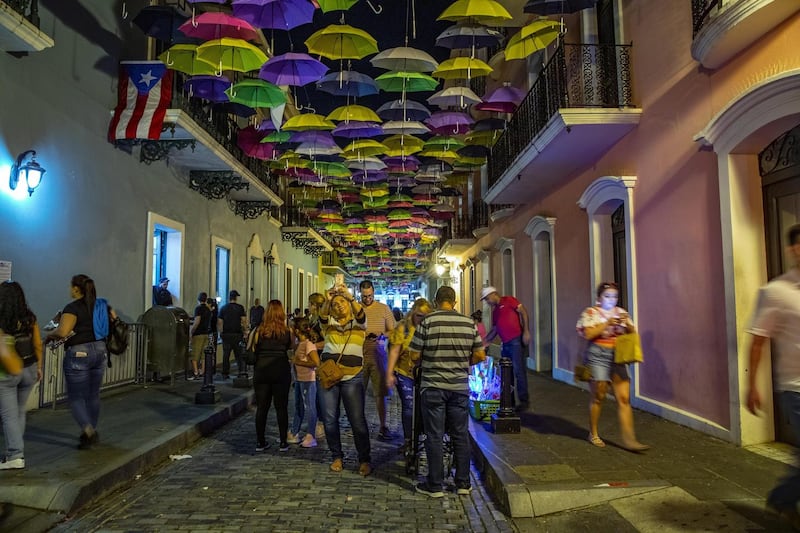
The tourists celebrating birthdays would not know that the coffee farms will take years to recover – and the red mangrove forests decades – or that commercial fishermen in the town of Luquillo still can’t get their usual haul of lobster, octopus and conch. After the Juan Martín River jumped its banks during the hurricane and took over the dirt road to the beach, the fishermen said, access became so difficult that they need to carpool on four-wheel drive vehicles or they can’t fish as much.
Why should tourists worry about any of this? Isn’t a Caribbean vacation by definition an escape from life’s troubles?
But in the juxtaposition of its two worlds, the tropical paradise versus the struggling island, Puerto Rico is representative of the many fragile places around the globe right now: The islands facing a future of sea level rise and extreme weather. The arctic spots where winter itself is under threat. The cities where a combination of climate change and bad planning has resulted in devastation.
The trend in travel has skewed in recent years toward more awareness and sensitivity – eco-tourism, voluntourism, agritourism, the idea that as visitors we should not cause harm and should seek out authentic experiences that get us deep into the local culture. Perhaps it would not be such a stretch to redefine the relationship between leisure travellers and their dream destinations.
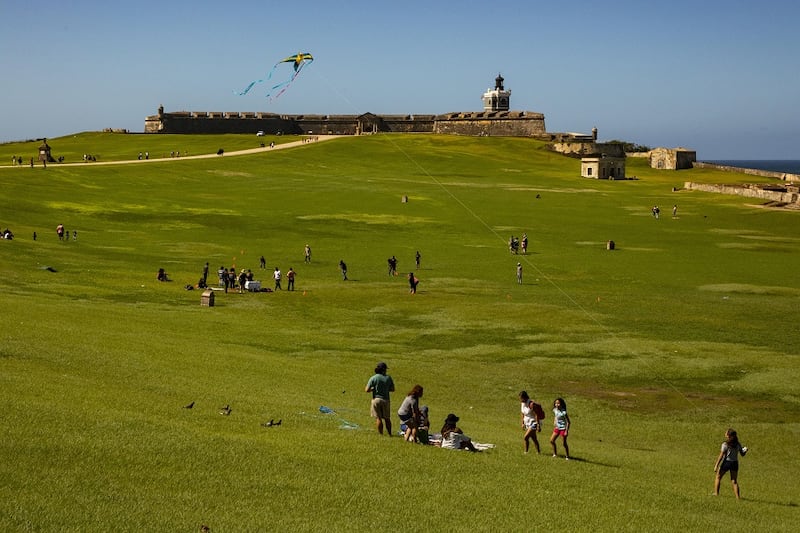
Travelling more consciously is not such a heavy lift, experts said. A baby step would be to take account of the realities of the place and then incorporate them into itineraries and more targeted spending – get out of the resort, patronise local businesses, reward hotels set back from the ocean with a stay.
If tourists did what Puerto Ricans like me do when they sightsee, they would eat roasted whole pig (“lechón asado”) in Guavate south of San Juan or seafood in the southern town of Salinas or bar-hop in the mountains among roadside restaurants and food shacks (“chinchorreo”).
Many will find that this new way of travel can lead to better vacations because it helps build a connection to the place.
Tour operators say that those travelling this winter to Puerto Rico and other islands damaged by Hurricane Maria tend to be “repeats and loyalists” going back to what they already love. After a temporary drop, said Jack Richards, president and CEO of Pleasant Holidays in Los Angeles, which handles travel to 23 islands in the Caribbean, bookings started picking up last June and “Caribbean tourism is back with a vengeance now.”
“Everybody understands that the best way to help Puerto Rico is to book there and help the local economy,” he said.
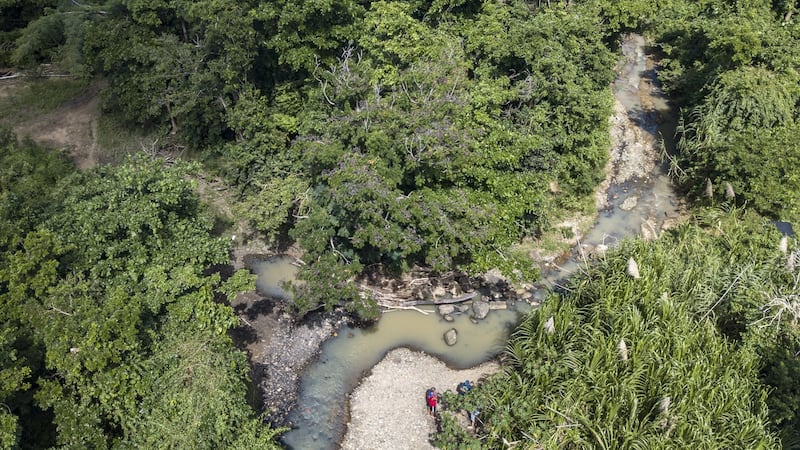
Organisations that help tourists combine sightseeing with volunteer work, such as Para La Naturaleza, a nonprofit that works on reforestation, are reporting higher demand. There are now more opportunities to help. Having survived the worst of the hurricane largely on their own as the government’s response faltered, residents’ self-reliance or “auto-gestión” efforts have kicked into high gear, with many communities organising and welcoming help to install solar lights, plant native trees, clear trails and launch rebuilding projects.
But just venturing out of San Juan to spread tourism revenue around can be enough. Puerto Rico’s recently formed destination marketing organisation, Discover Puerto Rico, is steering attention to more far-flung attractions because, officials said, about 77,000 tourism jobs depend on it.
Another group, the Coalition for the Northeast Ecological Corridor, is working on plans for a new trail that would link “El Yunque,” the inland tropical rain forest, to the coast between the towns of Luquillo and Fajardo. Cristóbal Jiménez, the group’s president, said the corridor was poised to become a major eco-tourism draw – it is home to prime nesting grounds for the endangered leatherback sea turtle and to more than 800 plant and animal species.
They, like the 3.2 million residents of this American territory, are proving their resilience. – Mireya Navarro
2. Hampi, India
An ancient archaeological complex becomes more accessible
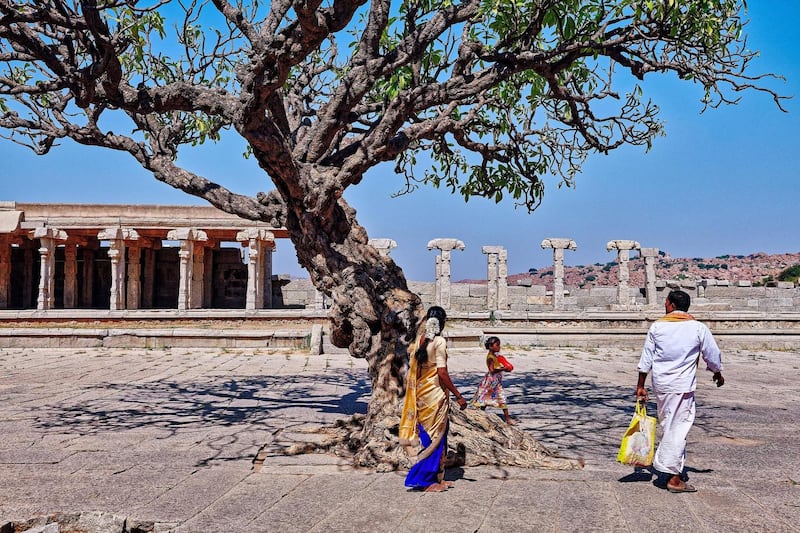
At the height of the Vijayanagar Empire in the 16th century, Hampi thrived as one of the largest and richest cities in the world. Its architectural legacy lives on in the southwestern state of Karnataka with over 1,000 well-preserved stone monuments, including Hindu temples, forts and palaces. Spread over 16 miles near the banks of the Tungabhadra River, and surrounded by a sea of granite boulders, the Unesco World Heritage site has been notoriously difficult to reach, until now. TruJet recently began daily direct flights from Hyderabad and Bangalore to Ballari, a 25-mile drive from Hampi. Travellers can stay in the newly refreshed Evolve Back Kamalpura Palace or at Ultimate Travelling Camp's new Kishkinda Camp, which introduced 10 stately tents in December. The outfitters Black Tomato and Remote Lands now offer journeys in the region, from guided archaeological tours to rock climbing and river jaunts in basket boats. – Nora Walsh
3. Santa Barbara, California
The “American Riviera” becomes a hip food and wine haven
Long known for drawing movie stars and millionaires to its resorts, Santa Barbara is now a foodie magnet. Acclaimed Melbourne and Manhattan chef Jesse Singh oversees Bibi Ji, an edgy Indian restaurant – try the uni biryani – with a wine list curated by noted sommelier Rajat Parr. "Top Chef" alum Phillip Frankland Lee presides over the Monarch, a posh Californian restaurant, and Chaplin's Martini Bar; he will open Silver Bough, a 10-seat tasting-menu venue in January. The Santa Barbara Inn's Convivo offers upmarket Italian fare and ocean views; nearby, at Tyger Tyger, Daniel Palaima, a veteran of the kitchens of Chicago-based chef Grant Achatz, serves Southeast Asian fare. (Try the Szechuan pepper soft serve ice cream at Monkeyshine to finish off the night.) The city has over 30 wine tasting rooms that don't look like their more staid cousins up north. Frequency and Melville feature modern furnishings and party-ready playlists; vinyl rules at Sanguis, a winery run by drummers. – Sheila Marikar
4. Panama
New eco-friendly resorts open on the country’s Pacific coast
Two new Pacific island resorts are expanding Panama's west coast appeal, not far from the marine preserve around Isla Coiba. Cayuga Hospitality recently opened Isla Palenque in the Gulf of Chiriqui, with eight casitas and one villa on a lush 400-acre island. Besides offering access to seven beaches, mangrove kayaking and whale-watching, the resort grows some of its own food, has furniture made from fallen trees and maintains a no-plastics policy, including subbing papaya shoots for straws. In the Gulf of Chiriqui, Islas Secas Reserve; Panama Lodge will open in January on a 14-island archipelago. The solar-powered, nine-bungalow lodge will offer sport fishing and scuba diving, and will compost food waste and recycle water for irrigation. A Ritz-Carlton Reserve property is also under construction in the Pearl Islands. – Elaine Glusac
5. Munich
Theatre. Art. Opera. What more do you want?
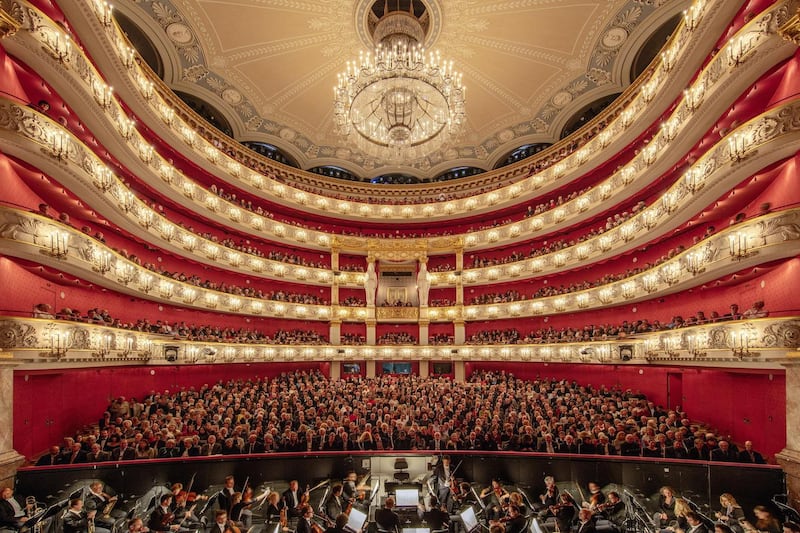
As far as cultural triple threats go, it's hard to beat Munich, the capital of Germany's Bavaria region. Its theatres are considered among the most creative and ambitious in Europe, with its two main companies, the Münchner Kammerspiele and the Residenztheater (the latter entering its final year under acclaimed artistic director Martin Kusej) producing more than 30 premieres between January and May 2019. And its museums are decidedly world class, especially since the renovation and reopening of the Lenbachhaus Museum in 2017, with its unmatched collection of the German artists known as the Blue Rider school. But perhaps the best argument for visiting Munich right now is the Bavarian State Opera, which has emerged as one of the most exciting opera houses in Europe. The reason? In the words of a New York Times classical music critic, "the miracle of Kirill Petrenko." Petrenko has just two more years remaining on his contract as music director at the Opera. This summer, he will conduct a new production of Richard Strauss' "Salome," with the opening night performance on June 27. – Stuart Emmrich
6. Eilat, Israel
A newly accessible Red Sea paradise
Beneath the prismatic waters of this Red Sea resort on Israel's southern tip lies a coral reef with hundreds of varieties of neon fish, sharks and stingrays. To get there, visitors used to have to catch a charter flight from Tel Aviv or brave the dusty drive through the Negev Desert. But with the opening early this year of Ramon Airport, set in the Timna Valley and capable of handling 4 million international transit passengers a year, the world will finally get a direct route – with nonstops from Munich and Frankfurt on Lufthansa, and budget carriers flying in from Prague, London and across Europe. New hotels, including the luxurious Six Senses Shaharut, opening just in time for Israel's turn at hosting the Eurovision 2019 song contest, are ready for the crowds. – Debra Kamin
7. Setouchi, Japan
Art and nature harmonise in Japan’s inland sea
The Setouchi region, which includes the Seto Inland Sea's islands and coastal areas, will host the Setouchi Trienniale 2019, a major art fair held in three seasonal installments. One hour south of the "art islands" via ferry or the Shinkansen bullet train, the Hiroshima Peace Memorial Museum reopens this spring after an eight-year refurbishment. Setouchi is also looking to draw a fresh crop of cyclists, with new trails and a dedicated Shimanami bike ferry that opened in October connecting Japan's main island of Honshu to the region's lesser-visited island of Shikoku. For those seeking more sybaritic forms of transport, 2017 had the maiden voyage of Guntu – more a minimalist floating ryokan than a cruise ship – with 19 walnut-clad rooms and open-air cypress soaking baths. In 2019, Setouchi Sea Planes, Japan's only sea plane company, will expand its scenic flights to several smaller islands and towns via Kodiak 100s. And a Japanese startup, Ale, launched – literally – the Shooting Star Challenge, a microsatellite that will create the world's first artificial meteor shower, aiming to fill Setouchi's skies in spring 2020, a taste of the high-tech one-upmanship to come in Tokyo's 2020 Olympics. – Adam H. Graham
8. Aalborg, Denmark
Architecture revitalises the waterfront
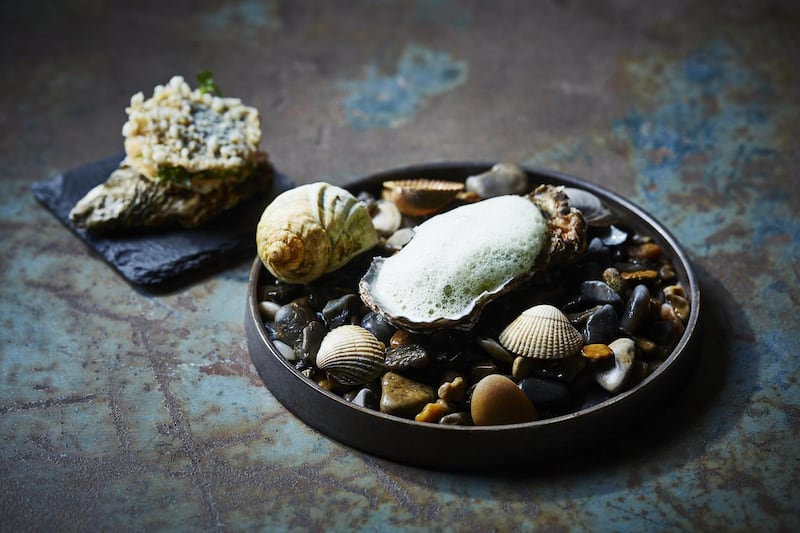
Viking long ships once glided through Aalborg's mighty Limfjord. Today, the city is turning its most famous natural asset into an artistic one. Wildly innovative buildings have sprouted on Aalborg's shores, including the Utzon Centre, designed by Jorn Utzon, the architect of the Sydney Opera House – check out its new exhibition series on inspiring Nordic architects, with a first show that runs through May. The curvilinear concert hall Musikkens Hus was recently followed by the vibrant Aalborg Street Food market; the pedestrian and cycling Culture Bridge; and the undulating Vestre Fjordpark, with an open-air swimming pool that meets the sea. The pioneering Nordkraft, a power plant that was converted into a cultural hub, is celebrating its 10th anniversary with special events in September. The historic Aalborg Akvavit distillery, which produced the potent Scandinavian spirit, is being transformed into a new creative district over the next two years, presided over by a soaring glass polygonal sculpture by Argentine artist Tomás Saraceno, Harbour Gate from Danish superstar architect Bjarke Ingels, a hotel and more. – Annelise Sorensen
9. The Azores, Portugal
The Caribbean comes to the middle of the Atlantic
In the nippy Atlantic Ocean the subtropical volcanic islands of the Azores, complete with Unesco World Heritage sites and biospheres, await discovery. Mystical green lushness, oversize volcanic craters now turned into lakes, steaming natural hot springs that puff out from the earth, blue hydrangeas by the thousands and the only coffee growers in Europe distinguish the island chain. New restaurants in Ponta Delgada include the locavore Casa do Abel, the Japanese-influenced Otaka, and Tasquinha Vieira, which specialises in local, organic cuisine, while new hotels include the Lava Homes on Pico Island, and the Grand Hotel Açores Atlântico, opening in July. – Daniel Scheffler
10. Ontario Ice Caves, Canada
See them now, as climate change may pose a threat
The ice caves that emerge from the winds and waves that pound the north shore of Lake Superior have always been somewhat ephemeral. But climate change has brought an element of doubt into their future. For now, the caves are a regularly occurring feature, notably along the shoreline near Sault Ste. Marie, Ontario, a steel town just across the border from a Michigan town of the same name. Made from snow and ice, the caves vary in size, shape and colour. Large waves before they freeze up – on Superior they can reach upward of 20 feet – are the essential ingredient for large caverns. The wind, shifts in the ice and the effects of the sun constantly remake the formations. February is the most reliable month for a visit. Getting to the caves involves driving one of the more scenic sections of the Trans-Canada Highway. Alona Bay and Coppermine Point are two of the more popular destinations. The staff members at Stokely Creek Lodge, a cross-country skiing and snowshoeing resort just outside of the Sault, keep track of where the most dramatic, but accessible, caves have formed each winter. – Ian Austen
11. Zadar, Croatia
Incomparable sunsets, a “sea organ” and untrammelled islands
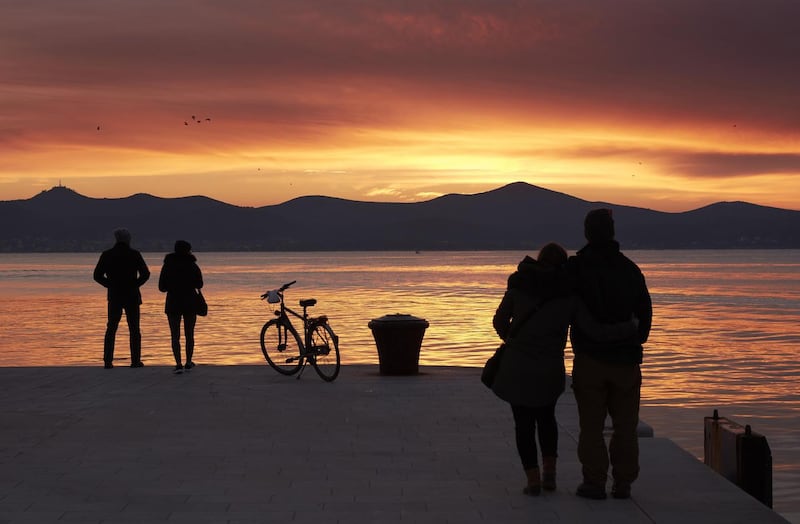
After the Croatian soccer team captured the world's attention in the World Cup last summer – its team captain Luka Modric's inspiring play was particularly notable – soccer fans revved up their search engines and learned that Modric hails from Zadar, a pretty, compact town on the Dalmatian Coast. Zadar is often ignored as visitors hopscotch from Istria in the north to Split and Hvar and then down to Dubrovnik. But that may be about to change, especially with Ryanair adding regular flights from Prague, Hamburg, Cologne and Nuremberg, starting this spring. Beyond Zadar's medieval core, the city's seaside promenade and music-making "sea organ," created by architect Nikola Basic, is a must-see (or hear). The magical sunsets alone were enough to wow Alfred Hitchcock, who visited the city in 1964. The town is also a gateway to untrammelled islands, like Dugi Otok; an hour-and-20-minute ferry ride takes visitors to the sparsely populated island with uncrowded beaches and taverns. Seeking ultraclean waters? Then head to the island of Pasman, where the currents often change, making the surrounding waters some of the cleanest in the Adriatic. – David Farley
12. Williamsburg, Virginia
The cradle of American democracy reflects on its past
In 1619, the area that includes the Jamestown Settlement, Williamsburg and Yorktown was home to some of the most significant events in American history: the official arrival of the first African slaves to North America, the convening of the first representative assembly in America and the first recorded proclamation of Thanksgiving in the New World. The area will observe the 400th anniversary of these events all year, highlighted by the Tenacity exhibition at the Jamestown Settlement, which recognises the contributions of women during the Colonial era, along with an archaeology-focused exhibit in Jamestown. Colonial Williamsburg, the expansive living-history museum, will give visitors a taste of life in the 18th century, along with the reimagined American Revolution Museum at Yorktown. For thrill seekers, Busch Gardens Williamsburg, the European-theme amusement park, will unveil a new pendulum swing ride, while Water Country USA will unveil the state's first hybrid water coaster. – John L. Dorman
13. Las Vegas
Sin City bets big on culture
Sure, there are still slot machines, strip clubs and steaks aplenty, but other options for culture in America's playground abound. The new Park MGM hosts residencies from two music legends through 2019: Lady Gaga, doing one show of her pop hits and another riffing on American classics, and starting in April, Aerosmith. Also at the Park: a rollicking iteration of the Italian emporium Eataly and Best Friend, a Korean restaurant by Roy Choi, the Los Angeles food truck pioneer, that becomes a hip-hop club after the tables are cleared. The Wynn recently added live, Dixieland-style jazz to its (man-made) lakeside brunch; it also offers master classes on subjects like dumpling-making. Nearby, the Venetian debuted three craft cocktail bars, the Dorsey, Rosina and Electra, where guests can actually sit down and hear one another talk. Downtown, the Life Is Beautiful festival, which corrals an array of musicians and artists each fall, enters its seventh year; 2018 stars included the Weeknd and Florence and the Machine. – Sheila Marikar
14. Salvador, Brazil
The country’s original capital gets a makeover
After completing a five-year historical preservation initiative to save its Unesco designation, Salvador, with its sherbet-coloured colonial facades, cobblestone streets and beaches, is gleaming. Rising along the coast of northeastern Bahia, the city's downtown historic district thrums with vibrant Afro-Brazilian culture, ranging from free weekly performances by samba and drum corps to classical music and capoeira. Visitors can also find Salvador's history exhibited in the new House of Carnival and, opening in 2020, the Museum of Music or catch a live concert at the Convention Centre of Salvador, opening this year. The Fera Palace Hotel, a refurbished art deco gem, and the freshly minted Fasano Salvador, housed in a former 1930s newspaper building, both overlook All Saints Bay, which in November will host the finish of the International Regatta Transat Jacques Vabre, a 4,350-mile race along the historic coffee trading route between France and Brazil. Salvador's newly constructed metro line conveniently connects the city centre and the expanding international airport, where Latam's weekly direct flight from Miami lands. – Nora Walsh
15. Danang, Vietnam
A spot for foodies and beachgoers
Danang, Vietnam's third largest city, is known for being a gateway to the nearby Unesco Heritage town of Hoi An. But it's begun to develop a reputation as the Miami of Vietnam, with a strong foodie scene and new hotels and resorts popping up on a 5-mile beach strip, including the InterContinental Danang Sun Peninsula Resort, on its own private cove, with hillside villas with individual plunge pools. A typical day might start with a morning swim on the crescent-shape Non Nuoc Beach and perhaps a quick stop at the Han Market. Then, an afternoon visit to the Marble Mountains, where travellers can explore the temples and pagodas that look out over My Khe Beach and, later, dinner back in the city, perhaps at Nén, a new restaurant from much-followed food blogger Summer Le. Perhaps finish the day with a visit to the highly Instagrammable Cau Rong Dragon Bridge in the hills above the city, which is illuminated every night. Don't leave without sampling a bowl of mi quang, the justifiably famous local noodle soup made with a turmeric-infused broth, chicken, pork, local seafood and shredded cabbage, and available for about 90c at any number of street-food stalls. – Stuart Emmrich
16. Costalegre, Mexico
A beach vacation, without the crowds
Costalegre is a stretch of 43 largely unpopulated beaches, capes and bays along Mexico's gorgeous Pacific coast, about halfway between the better-known destinations of Puerto Vallarta and Manzanillo, and one that has so far escaped the attention of vacationers flocking to its popular neighbours to the north, Punta Mina and the surfer's haven of Sayulita. One factor keeping away the crowds: lack of easy access. Up until now, the nearest airport has been more than a two-hour drive away, in Puerto Vallarta. But that will change with the planned opening of the Chalacatepec Airport in the second half of this year, which will cut travel time by more than half. And a clutch of luxury hotels will soon follow – including 10 from the AMResorts group that will open in the area in the next two years. For now, the best luxury option is Las Alamandas Resort, set on a 1,500-acre nature reserve, with just 16 suites in seven brightly painted casitas, as well as two restaurants, a spa and a large pool. Smaller hotels and even bungalows near the beaches can also be rented. – Stuart Emmrich
17. Paparoa Track, New Zealand
A new wilderness trail explores a remote national park
Outdoor enthusiasts can head to New Zealand starting in October to trek the country's first Great Walk trail to open in more than 25 years. Tracing the Pororari River along the west coast of the South Island, the Paparoa Track winds through Paparoa National Park, a reserve largely inaccessible until now. Built by the Department of Conservation for hikers and mountain bikers, the 34-mile trail (hiked in three days; biked in two) departs from a historic mining town and traverses epic limestone gorges, beech forests and sandstone bluffs before culminating at the Punakaiki Blowholes. For a small fee, travellers can stay overnight in two new 20-bunk huts overlooking the southern Alps and Tasman Sea. The Pike29 Memorial Track, which honours victims of the 2010 Pike River Mine tragedy, intersects the route. Reservations can be made on the Department of Conservation's website; both tracks are free and no permit is required. – Nora Walsh
18. Puglia, Italy
Baroque architecture and Adriatic beaches in Italy’s heel
The ancient fortified farmhouses called masserie, found only in the region of Puglia, are increasingly being turned into boutique hotels, most notably Rocco Forte's Masseria Torre Maizza, and the 17th-century Castello di Ugento, where guests can take cooking classes at the Puglia Culinary Center. And the region's 1,000-year-old wine culture, which began when the Greeks planted vines from their land across the Adriatic, is attracting more oenophiles to the area, including the owners of the London restaurant Bocca di Lupo, who recently bought a 600-acre estate in Salento called Tormaresca, where tastings are offered to visitors. (You can also dine in their new restaurant in the town of Lecce.) Puglia is also home to Europe's Virgin Galactic spaceport, which is scheduled to open in 2019, with the promise of eventually sending passengers into space. No wonder Abercrombie & Kent's new Italian cruise includes Puglia and Gargano National Park. Flights are now easier with Transavia and easyJet adding routes for 2019 . – Daniel Scheffler
19. Tatra Mountains, Slovakia
Off-the-grid skiing, rock climbing and more

While most visitors focus on Slovakia's capital, Bratislava, the soaring Tatra Mountains have emerged as an under-the-radar destination for skiing and outdoors activities, with new gondolas at the Bachledka and Jasna ski areas; slopes planned at Mlynicka Dolina; and new chair lifts at Oravska Lesna in the nearby Fatra range to the northwest. And it's not just about winter sports: There is excellent hiking, rock climbing, mountain biking and fly-fishing, while beyond the Tatras, Kosice, a regional capital, offers colourful street art and plenty of cafes and restaurants, thanks to its three universities and associated night life. Plan on posting plenty of photos: You'll find untouched folk architecture throughout the region, as well as perfectly preserved Gothic and Baroque buildings awaiting your lens. – Evan Rail
20. Calgary, Alberta
A spectacular library adds to a once-neglected neighbourhood
Calgary's new Central Library, from the architectural firm Snohetta, creates not just a design destination, with daily tours, but also a gateway in the form of an arched cedar-clad passageway linking downtown to the city's evolving East Village, a booming neighbourhood where the Bow and Elbow Rivers meet. Calgary was founded in the East Village area in 1875, with a fort built to curb the growing whiskey trade, but the area suffered roughly 70 years of neglect before the Calgary Municipal Land Corporation, formed in 2007, began transforming the area, adding parks, attractions and high-rises. The 240,000-square-foot library, with a performance hall, cafe, children's play area and outdoor electromagnetic sculptures by Christian Moeller, is next to Studio Bell, home to the National Music Center museum and performance space, and near the just-opened Alt Hotel. Later this year, the multiuse building M2 promises more shops and restaurants beside the Bow River. – Elaine Glusac
21. Olkhon Island, Lake Baikal, Russia
A natural wonder resisting the threats of development
Lake Baikal in Siberia is the world's deepest lake, plunging 1 mile into the Earth's crust. It contains nearly 20 percent of the world's unfrozen fresh water and is so abundant in wildlife – bears, foxes, sables, rare and endangered freshwater seals – that Unesco calls it "the Galápagos of Russia." The wildlife, like the lake itself, has been under threat for years, from indifferent Soviet industrial policy, from climate change and from today's rising tourism, especially from China. Even so, it remains largely unspoiled, and activists are working hard to keep it that way. Olkhon Island, Baikal's largest, and a place that Buddhists consider one of the holiest in Asia, is a popular base for excursions year round, even from December to April or May, when the surface freezes into turquoise sheets of ice that Siberian winds churn into natural sculptures. The Baikal Ice Marathon, a charity devoted to the lake's conservation, will be held March 2. – Steven Lee Myers
22. Huntsville, Alabama
Time to party like it’s 1969
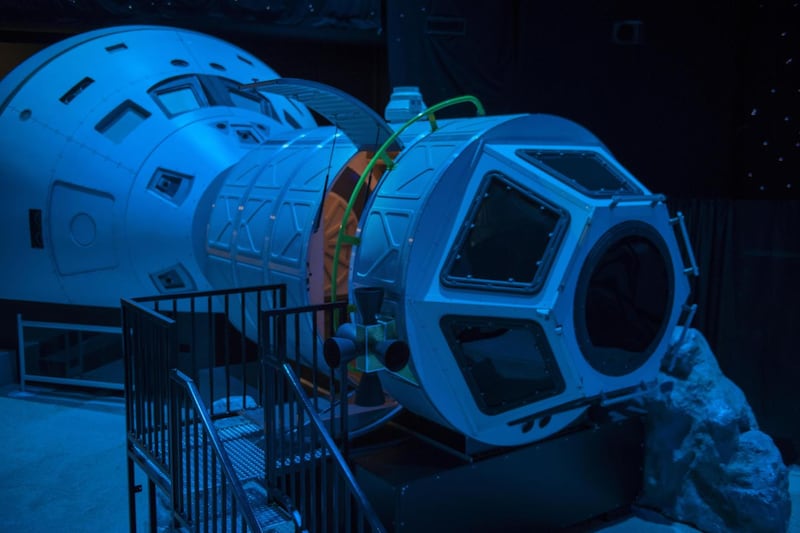
The 50th anniversary of the Apollo 11 moon landing will draw crowds to Huntsville – aka Rocket City – home of the Marshall Space Flight Center, where the spacecraft that launched astronauts to the moon were developed. Throughout the year, there will be daily re-enactments of the moon landing at the US Space & Rocket Center, but the biggest thrills are planned for the anniversary week of the Apollo 11 Lunar Landing Mission in July. Beginning on launch day, July 16, the centre will attempt to break a Guinness World Record by launching 5,000 model rockets at 8:32 am, the precise time that rocket engines ignited in 1969. Festivities will continue with a classic car show, concerts, a homecoming parade and a street party in downtown Huntsville – the same location where Apollo workers celebrated after the successful mission. If that's not fun enough, 2019 also marks the state's bicentennial, giving Alabamians yet another excuse to party. – Ingrid K. Williams
23. Falkland Islands (Islas Malvinas)
Five kinds of penguins, easier to reach
The Falkland Islands, far off the coast of Argentina, offer an astonishing variety of wildlife that includes five kinds of penguins, hundreds of bird species, seals, sea lions and whales, as well as remote natural beauty that travellers often have to themselves – the human population is just 2,563. Two new local touring companies are increasing accessibility to the riches of the islands, the sovereignty of which is in dispute between Argentina and Britain (hence the two names). Falklands Outdoors opened in November 2018 and offers mountain climbing, foraging, hiking and sea kayaking expeditions to beaches and penguin colonies that can't be reached by road; in January, Falklands Helicopter Services will start scenic flights to Volunteer Point (home to an enormous king penguin colony), and other isolated spots. While there's a single weekly commercial flight in and out of the Falklands, the first new route to the islands from South America in more than 20 years is being planned: LATAM is expected to begin weekly flights to the islands from Brazil by late this year. – Nell McShane Wulfhart
24. Aberdeen, Scotland
The Granite City via brand-new old-fashioned trains
Just as many famous European overnight train routes, like Paris to Berlin, have been retired, the Caledonian Sleeper, the train that travels through the night from London all the way to the north of Scotland, is rolling out new carriages in time for summer. For adepts of slow rail travel, the new cars preserve the romance of overnight trains, in contemporary comfort, with a choice of hotel-style suites, classic bunk beds or seats. The Highlander route to Aberdeen leaves Euston Station in London in the evening and hits the Scottish coast by 5 am, so travellers who take an early breakfast in the dining car can enjoy coastal views as the sun rises (get off at Leuchars for medieval St. Andrews). Off the train, Aberdeen and its surroundings offer historic castles set in fields of purple heather, in pine woods and along the dramatic coastline. Hiking trails abound on and around the queen's estate at Balmoral, and rail buffs can visit the former royal train station in Ballater, closed since 1966, and ride on the Royal Deeside Railway a short drive from there. – Palko Karasz
25. Golfo Paradiso, Italy
A rare unspoiled gem on the Italian Riviera
The well-known pearls of the Ligurian Riviera – Portofino, Cinque Terre, Portovenere – are overwhelmed with tourists, a problem so acute that in some areas authorities have debated measures to stem the flow of day-trippers. But just a few miles away, between glamorous Portofino and the industrial port of Genoa, remains a peaceful sliver of coastline rarely explored by travellers to the region. Known as the Golfo Paradiso, this small gulf is home to five often-overlooked villages, including Camogli, a colourful fishing hamlet as charming as any of the Cinque Terre. Italians will boast about the renowned local cuisine: fresh-caught anchovies, hand-rolled trofie pasta and cheese-filled focaccia from the town of Recco, a specialty that recently earned IGP status, a prestigious Italian designation for quality food products. Between meals, explore blooming gardens in Pieve Ligure, beaches in Sori and the Romanesque abbey of San Fruttuoso, which is accessible only by boat or a long, sweaty hike. – Ingrid K. Williams
26. Dessau, Germany
A big birthday for Bauhaus
This year marks the 100th anniversary of the publication of German architect Walter Gropius' "Proclamation of the Bauhaus," a radical reimagining of art, architecture and design that drew luminaries like Mies van der Rohe, Paul Klee and Vassily Kandinsky and reverberated worldwide. To celebrate the Bauhaus Centennial, cities around Germany will hold events, from the opening festival in Berlin – several days of art, dance, concerts, theatre, lectures and more this month – to the debut of the Bauhaus Museum in Weimar, where the movement was born. But the most compelling destination might be Dessau. Home of the Bauhaus school during the 1920s and '30s, the northeastern German city still contains the school's pioneering (and Unesco-listed) Bauhaus Building, the Gropius-designed Masters Houses, and the Prellerhaus studio building (a warren of former Bauhaus ateliers that now contains a hotel). And in September, Dessau opens its long-awaited Bauhaus Museum, a glassy, minimalist rectangle that will showcase typefaces, textiles, artwork, furniture and more from the movement. – Seth Sherwood
27. Tunis, Tunisia
The spark for the Arab Spring, still lit
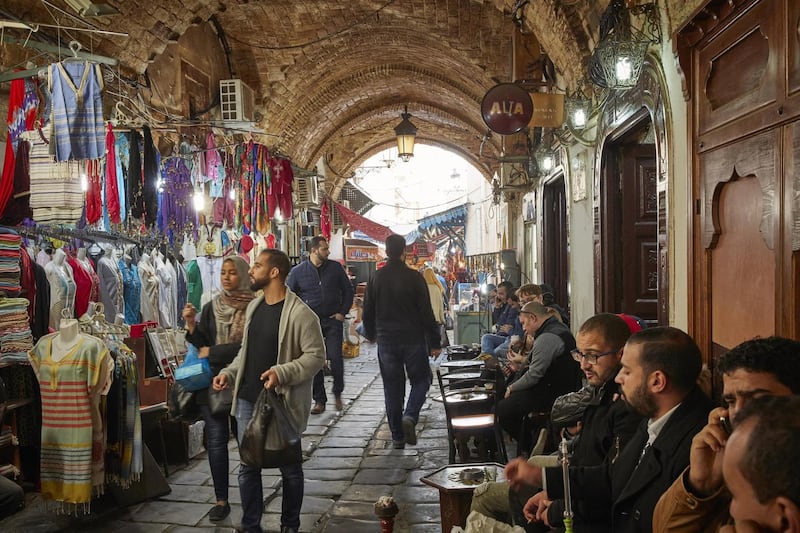
Freedom is what makes Tunis unique. Eight years after it kicked off the Arab Spring, Tunis remains the only Arab capital with real freedom of expression, not to mention the peaceful rotation of power. But the city holds many other charms. Among them are the ruins of the ancient city of Carthage, from which Hannibal's elephants once threatened Rome. The carefully preserved old medina – with its radiant tiles, historic mosques and warren of alleys – dates from the 12th to the 16th century, when Tunis was a major centre of the Islamic world. The tree-lined Avenue Habib Bourguiba downtown bears the unmistakable influence of decades of French rule. And the cafes, art galleries and blue-and-white hues of the neighbourhood of Sidi Bou Said, overlooking the Mediterranean, have long lured European painters, writers and thinkers, including Paul Klee, André Gide and Michel Foucault. A short taxi ride away are the beguiling beaches and nightclubs of La Marsa. The French-influenced North African food is delicious. The local red wines are not bad. And, in another regional rarity, Tunis in 2018 elected a woman its mayor. – David D. Kirkpatrick
28. Gambia
Hippos and chimpanzees – and a renewed sense of hope
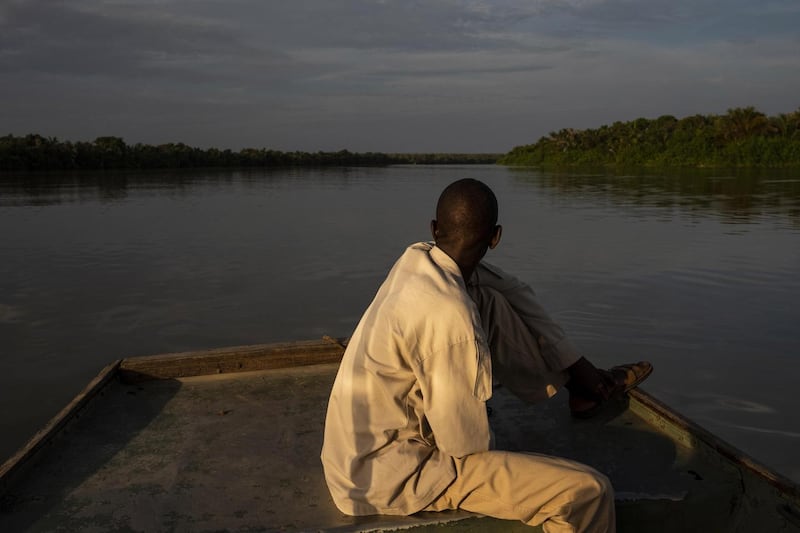
Gambia's tourism industry was hit especially hard in 2017, when its longtime authoritarian ruler Yahya Jammeh refused to cede leadership after a shocking election loss, forcing a political standoff that brought foreign troops in. But with its new president, Adama Barrow, now safely in place, there's a renewed sense of hope across continental Africa's smallest country – now more accessible than ever. In January, a new bridge over the Gambia River, three decades in the making, will be inaugurated with a nearly 200-mile relay run to Dakar, Senegal. Peregrine Adventures launches its first cruise up the 700-mile river, with a stop at Baboon Island, home to hippos, crocodiles and chimpanzees, part of Africa's longest-running centre for rehabilitating chimpanzees into the wild. New and coming hotels, including the African Princess Beach Hotel, and two properties by the British holiday company Thomas Cook, will serve as stylish bases. And new direct flights from Europe make getting to this West African country easier than ever. – Ratha Tep
29. Northern Rivers, Australia
Along a breezy coastline, boho paradise
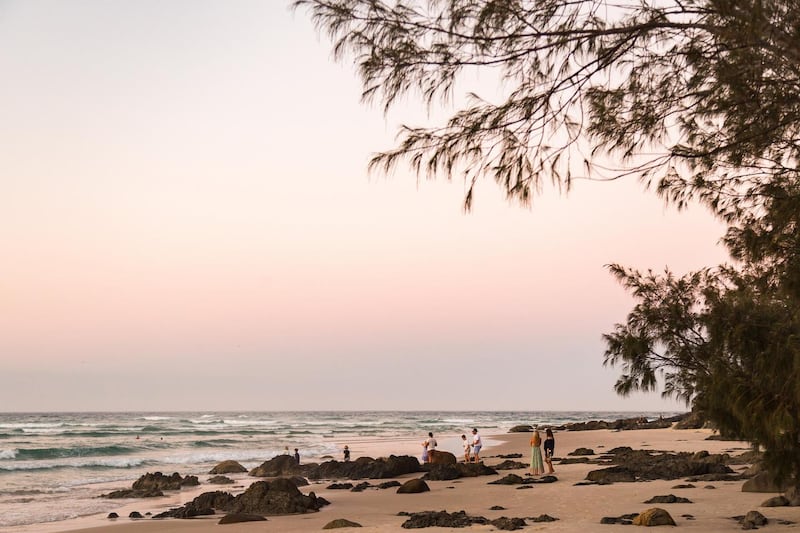
The coastline just below the New South Wales-Queensland border is known as the Northern Rivers thanks to the tidal river system snaking through it. Anchored by Byron Bay, the area has become a beacon for those seeking a breezy boho way of life. In recent years a more moneyed, stylish vibe has settled in and seeped from Byron into neighbouring small towns. Mullumbimby (hometown of Iggy Azalea) hosts one of the country's most vibrant weekly farmers' markets. Brunswick Heads, which has a riverbank park where families and dogs swim and play, is home to a huge historic pub with a sprawling patio, and offers great shopping and Fleet, an unassuming little restaurant that serves some of Australia's most delightful cooking. Up and down the coast, the restaurant scene is thriving: Paper Daisy in Cabarita Beach sits in the ground floor of Halcyon House, an old surf motel turned boutique hotel; in Lennox Heads, Shelter's dining room is open to the ocean breeze, and the food is as stunning as the view. For a taste of the old-school hippie wonderland from which all of this sprang, check out the Crystal Castle, a "crystal experience" in a hilltop garden. – Besha Rodell
30. Frisian Islands and Wadden Sea
Oysters, seals, birds and dark skies on Europe’s wild left coast
Sustainable tourism blooms on Western Europe's windswept Frisian Islands, shared by Denmark, Germany and the Netherlands and linked by the Wadden Sea. Holland's Lauwersmeer National Park started offering dark-sky safaris in 2018 and will open a Seal Rescue Center in 2019 that lets visitors rehabilitate and release two native seal species, followed by an ultramodernist Wadden World Heritage Center to open in 2020. Dutch campground resorts like Beleef Lauwersoog offer excursions to nearby Schiermonnikoog island and have expanded lodging options with new barrel-shaped sleeping pods and refurbished overwater bunkers, once used by duck hunters, on remote swaths of the North Sea. Denmark's Fanoe island started offering DIY oyster foraging safaris, where visitors can rent boots and shucking tools to gather invasive, but delicious, Pacific oysters, thus helping preserve Denmark's native Limfjorden oyster habitat. The Fanoe Oyster Festival, next in October 2019, has lured chefs across Denmark with an annual oyster cooking competition. The entire region is more accessible thanks to Eurostar's London-to-Amsterdam rail link, which started in 2018. – Adam H. Graham
31. New York City
New cultural monuments, and remembrances of the past
New York is always building, but this spring, the scaffolding comes off a project that could redefine the city's physical and cultural infrastructure. At Hudson Yards, the largest single development since Rockefeller Center took shape in the Depression, a cultural arts centre called the Shed will go into gear – literally. Its largest theatre is a retractable structure on wheels that creeps back and forth like a giant steel caterpillar, turning the outdoor space of a plaza into indoor space for performances. Not far away will be what the developers are calling New York's Staircase, an eight-story structure with 154 flights of stairs, 80 landings and 2,000 steps. Around the same time, the wraps will come off the Museum of Modern Art's $400 million expansion, which will increase its gallery space by almost a third. And the first guests will check into the TWA Hotel at Kennedy International Airport. The centrepiece is Eero Saarinen's swooping TWA Flight Center, a relic from 1962, with 512 hotel rooms in two new buildings with walls intended to block runway noise. And in June, the city will host World Pride – the event's first time in the United States – for the 50th anniversary of the Stonewall uprising. – James Barron
32. Chongli, China
Witness a winter sports revolution
The lead-up to the next Winter Games is well underway in and around Beijing, and the spectacle is breathtaking. The most stunning transformations are happening about a four-hour drive north of China's capital in Chongli, once one of the country's poorest areas and now home to several multibillion-dollar ski resorts, towering condominiums and flashy hotels. Over the past few years, Chongli has transformed into a glistening winter sports hub filled with restaurants, inns and watering holes with names like Snow Bar and Nordica. At least five ski resorts now surround the city, including places like Genting Secret Gardens, Fulong and Thaiwoo, which could be plucked straight out of a Vail design manual, with an on-property brewery, a midmountain chalet that serves Swiss and Austrian fare, and brand-new gondolas. A high-speed train from Beijing to Chongli should open sometime in 2019, slashing travel times. The skiing isn't world-class. Nearly all of the snow comes from a cannon, and runs average about 1,300 vertical feet, about a third of those at Breckenridge in Colorado. But go now to see firsthand how the world's most populous country is working overtime to become a competitive winter sports nation. – Tim Neville
33. Orcas Island, Washington
A small island is attracting big-time foodies (and Oprah)
The horseshoe-shaped Orcas, one of the largest islands that make up the San Juan archipelago, has gained fame in recent years for its impressive tide-to-table culinary scene and experimental wines, attracting among others, Oprah Winfrey. (In 2018, Winfrey bought a 43-acre estate on the island for a reported $8.275 million.) A new wine enterprise, Doe Bay Wine Company, is presenting its Orcas Project in 2019 – a collaboration between acclaimed winemakers and vineyards in the Pacific Northwest. Ventures from James Beard-nominated chef Jay Blackinton, who owns Hogstone, a former pizzeria now featuring ambitious nose-to-tail fare, and its more upscale counterpart Aelder, are also on the horizon. Another addition to the island are the luxury suites at Outlook Inn, in the town of Eastsound, overlooking Fishing Bay. If you want to hike, or ride a horse, the island's Moran State Park will be adding trails to its 38-mile network this year. – Daniel Scheffler
34. Uzbekistan
Visa-free travel and reopened borders along the Silk Road
If you have ever wanted to travel the Silk Road, now may be the time to go. After more than 25 years since the fall of the Soviet Union, the former member country of Uzbekistan is going through its own perestroika. Among the modernising reforms are better official exchange rates and the ability to book flights and apply for visas online. Americans and 100 other nationalities are allowed visa-free entry for up to five days (visas are good for 30 days), while French citizens are permitted visa-free entry up to one month. (Kazakhstan and Uzbekistan are also working toward creating a single Central Asian visa for tourists.) Ground and air travel have also improved regionally, in part because of China's $800 billion One Belt, One Road initiative (which links countries stretching between East Asia and Europe), as well as reopened borders with neighbouring countries, re-established flight routes between Central Asian capitals, like Tashkent and Dushanbe, and increased flight service between New York and Tashkent. In addition to the relatively new Hyatt Regency in Tashkent, other international hotels are expected to open in the coming years. – Erin Levi
35. Vestlandet, Norway
A bucolic paradise for mountain-climbing beer lovers
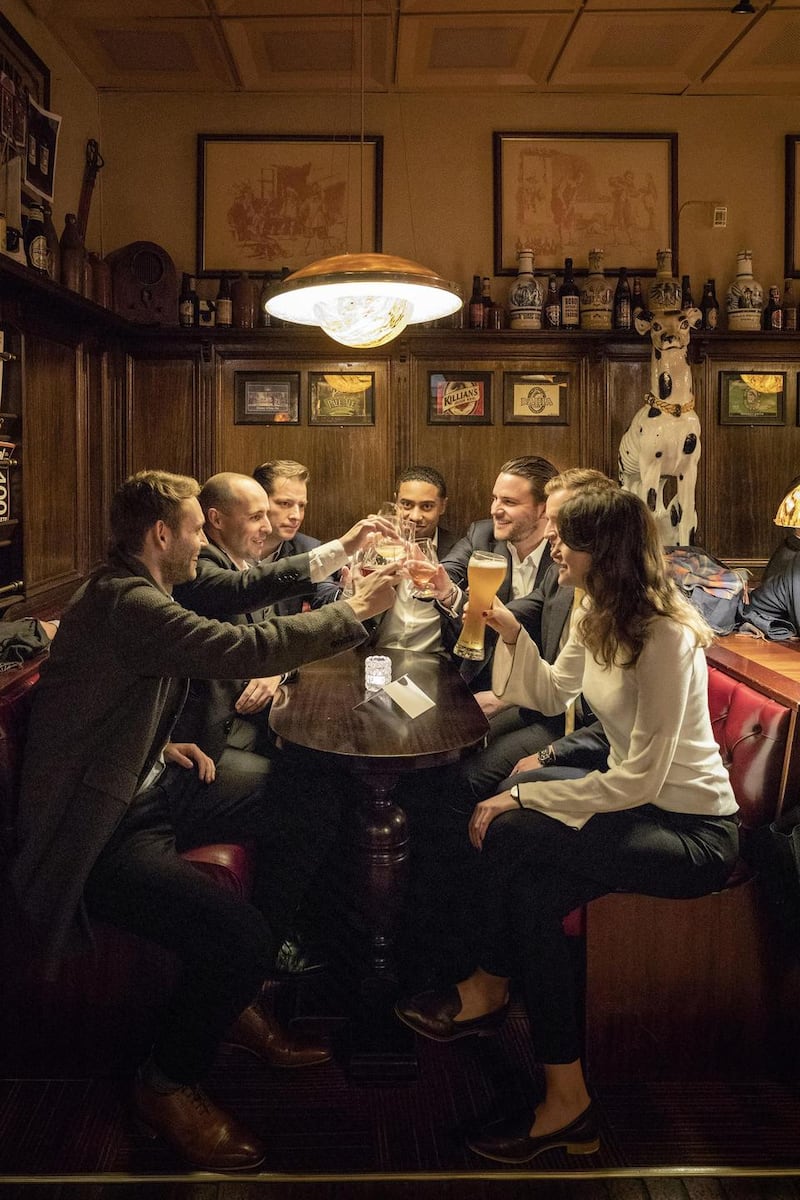
Rural Vestlandet, in western Norway, home to some of Scandinavia's most beautiful landscapes, is piquing the interest of outdoorsy types, especially those who take their beer seriously. The recently opened Loen Skylift ferries travellers more than 3,280 feet to the top of Mount Hoven in just a few minutes, while fearless climbers can put on a harness, hire a guide and make roughly the same journey in six extremely photogenic hours, following a protected climbing path that features one of the longest "via ferrata" suspension bridges in Europe. After sightseeing, relax over an ale made with kveik, a local yeast that has enthralled brewers and scientists around the world in recent years for its fruity aromas and higher-than-normal fermentation temperatures. You can find it at bars like Tre Bror, in Voss, the Smalahovetunet restaurant and brewery nearby and the Cardinal pub in Stavanger. Beer lovers who want to learn (and taste) more can time their visit to coincide with the October Norsk Kornolfestival, which features close to 100 beers made with kveik, often including juniper and other traditional regional ingredients. – Evan Rail
36. Lyon, France
Soccer, sausage and fresh air
Soccer fans should set their sights on France this summer, especially Lyon, where positive thinking in some circles holds that US women will clinch their fourth World Cup title in the final match July 7. Even if you can't get tickets – or détestez le football– the city of half a million people and 4,000 restaurants is worth a visit. This year Lyon, plays host to an International City of Gastronomy project. The indoor, one-acre exhibition will include interactive workshops and conferences designed to showcase France's cuisine and its contributions to health and pleasure. The exhibition will be at the Grand Hôtel Dieu, a sprawling complex first founded in the 1300s that reopens after four years of renovations with shops, restaurants, public spaces and a five-star hotel. When it comes time to work off all those plates of pork sausage, hike in nearby Écrins National Park, where traditional working dogs protect herds of sheep. Book a stay at the Temple-Écrins hut, where workers recently wrapped up three years of renovations. – Tim Neville
37. Doha, Qatar
Avant-garde architecture blooms in the desert
As the next men's soccer World Cup approaches in 2022, the host nation, Qatar, is loading its capital with structures from the biggest names in international architecture. The sharp-angled, futuristic Qatar National Library, designed by Rem Koolhaas and his OMA firm, opened in 2018; 2019 will welcome the National Museum of Qatar, a sprawling expanse of interlocking tilted circular discs by Jean Nouvel. A contribution from a third Pritzker Prize-winner, Zaha Hadid, is slated to materialise in the form of a swooping, curvaceous stadium; another stadium, from Pritzker-winner Norman Foster, is also under construction. The new structures add further dazzle to the Doha skyline, which already includes Nouvel's syringe-like Doha Tower and the blocky white jumble of the Museum of Islamic Art, by I.M. Pei. – Seth Sherwood
38. Batumi, Georgia
A hushed seaside escape
Tbilisi, Georgia's charming capital, has been flooded with tourists over the past decade. But Batumi, a hushed seaside city where verdant mountains slope down to the Black Sea's smooth stone beaches, offers a different experience. Already a popular escape for Russians, Iranians, Turks and Israelis, the city is preparing itself for its inevitable discovery by the rest of the world: New hotels – including Le Meridien Batumi and a Batumi instalment of the design-centric boutique Rooms Hotel line – are rising, and a cable car will swing straight to the coast from the hilltop Batumi Botanical Garden. Winemaking is another draw – at the family-run BQ Wine Bar and the underground Karalashvili's Wine Cellar, which pours the same rosé and amber-hued chkaveri varietals that Josef Stalin adored. – Debra Kamin
39. Marseille, France
An influx of young creatives gives the city a new edge
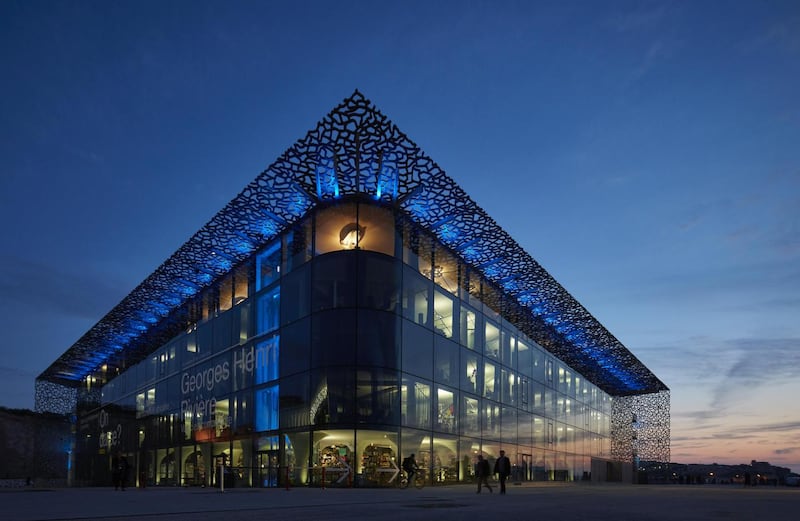
Six years after Marseille was named European Capital of Culture in 2013, the city's renewal is still galloping along. Jean Nouvel, for instance, has just finished his striking new red, white and blue skyscraper La Marseillaise. The real proof of the city's metamorphosis, however, is that it is attracting young creative types from all over France and beyond. Laura Vidal, a sommelier from Quebec, and British chef Harry Cummins opened La Mercerie, a market-driven bistro in an old notions shop in the city's Noailles district last spring. Noailles is also brimming with new shops (don't miss Épicerie I'ldeal, the city's best new food store), cafes and restaurants. Other districts in the heart of Marseille are being transformed as well. Near the opera, Tony Collins, who has lived in Brooklyn and Los Angeles, recently opened Deep, an artisanal coffee shop that roasts its own beans and also sells vinyl records; and the mixologists at the trendy Copper Bay bar shake it up for locals and guests from the nearby Les Bords de Mer, the city's best new boutique hotel. – Alexander Lobrano
40. Wyoming
A sesquicentennial celebration of women’s suffrage in the Equality State
In 1869, the Territory of Wyoming passed the first law in US history granting women the right to vote – nearly 51 years before the 19th Amendment guaranteed the same entitlement to all women. This year, visitors can celebrate the 150th anniversary of Wyoming women's suffrage at the Wyoming House for Historic Women, which honours the first woman to officially cast a ballot in a general election, and 13 other trailblazing women in the state's political history. The restored Capitol building (reopening midyear), Wyoming State Museum and Cowgirls of the West museum also feature exhibits and artefacts celebrating women's history. In addition, a variety of all-female trips are on offer throughout the year including Women's Wellness Pack Trips on horseback from Allen's Diamond 4 Ranch, cattle herding and archery at the WYLD West Women retreat, Hike Like a Woman nature adventures and fly-fishing clinics at the Proud Wyoming Woman Retreat. – Nora Walsh
41. Los Angeles
Finally, more than Grauman’s (groan)
Los Angeles too often gets boiled down to its least interesting element: Hollywood. It's an insult to a region with a vibrant Koreatown (sit in the hot salt at Wi Spa and then feast on roast gui at Dong Il Jang); two nationally recognised high school show choirs (John Burroughs and Burbank); art galleries like the quirky Parker, in a Los Feliz mansion; and several big-league sports teams, two of them soon moving to a new $2.6 billion stadium. But in summer 2019 there will be an honest-to-goodness Hollywood reason to visit the area. After delays, the Academy Museum of Motion Pictures is scheduled to open in a Renzo Piano-designed complex on Wilshire Boulevard. Promised are interactive exhibits about the art and science of filmmaking, starry screenings in two theaters and to-die-for memorabilia – the collection includes a pair of ruby slippers, 12 million photographs, 61,000 posters and 190,000 video assets. – Brooks Barnes
42. Dakar, Senegal
An oasis of freedom in a region of unrest
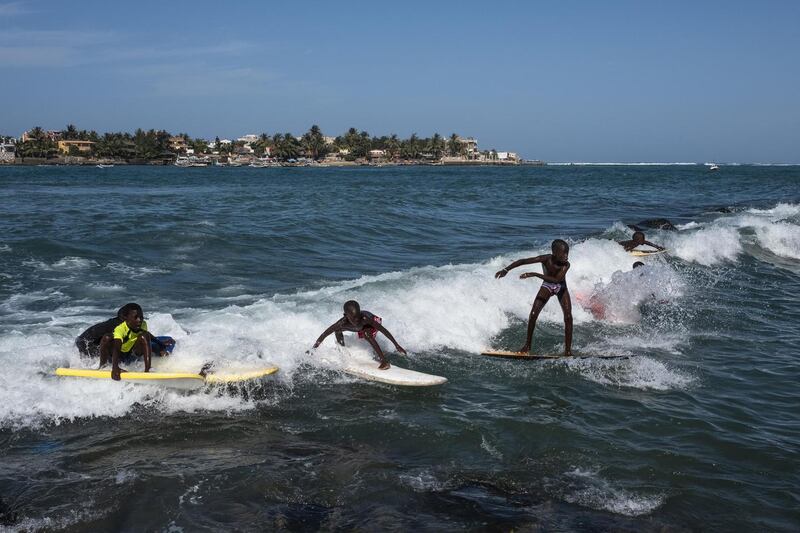
This seaside city on the western coast of Africa, bursting with positive energy, is a haven of peace in a region known for unrest. Flamboyantly painted car rapide minibuses rumble down the streets, and brightly painted wooden pirogues patrol the Malibu-like coastline. Today, this Francophone city is a siren song for hipsters. You can go to surf camp on the tiny island of Ngor or rent a board for a few hours to surf the more than a half dozen beaches that offer a terrific year-round break. Or just sit back and watch the surfers while eating grilled fish at a long strip of beach restaurants. A Museum of Black Civilizations will be opening early this year and will showcase artefacts as well as contemporary art from Africa and the diaspora. The city's design and fashion creations would fit right in at New York showrooms. Take in a late-night concert with legends like Cheikh Lo and Youssou N'Dor crooning into the wee hours and a lively bar scene that offers all-hours entertainment. Day trips let you sleep in a baobab tree, zip line through a baobab forest or swim in a pink lake. But climate change, overfishing and a booming population may eventually take their toll. – Dionne Searcey
43. Perth, Australia
A city transformed and enlivened
A decade-long development boom has supercharged Perth, a city known for its isolation on Australia's western coast. Among the new attractions: Yagan Square, in a crook of highway near the central business district, with its distinctive market hall, art park and 147-foot digital tower with a 46-foot-high circular screen that showcases work by local artists and livestreams events; Optus Stadium, a 60,000-seat venue for concerts and sporting events, including cricket; and Raine Square, a $200 million redevelopment in the business district that includes a movie theatre, shopping and restaurants including Hong Kong-based dim sum chain Tim Ho Wan, considered the world's most affordable Michelin-starred restaurant. To accommodate the expected growth in tourism, 31 new or redeveloped hotels have opened in the past five years, including the luxury COMO, the hip QT and a Westin. Since 2007, liquor law reforms, including a 2018 change that let restaurants serve drinks without a meal, have changed the drinking and dining scene with more than 100 small bars opening in the central business district alone. And Qantas started a nonstop flight from London to Perth this year, the first from Europe. – Kelly Dinardo
44. Hong Kong
Dazzling infrastructure eases travel but could threaten independence
After Britain returned its former colony to China in 1997, Hong Kong prided itself on resisting mainland interference. Last year saw the opening of a high-speed train that takes passengers all the way to Beijing, and a 34-mile sea bridge linking Hong Kong to the mainland for the first time, opening the question of whether that independent streak can survive. For travellers, though, boarding a train at the new West Kowloon station bound for Beijing – and more than 30 other destinations in China – is a game changer. The 1,200-mile trip to Beijing is just nine hours, and the business-class seats are roomy. Whether they are headed to China or not, travellers can indulge in British nostalgia at the Mandarin Oriental Hotel. The 25th-floor M bar offers fabulous views of the harbor, exotic cocktails like Sarawak Tea Punch and memories of the 1960s when the hotel opened as a symbol of luxury and style in this ever-glamorous city. – Jane Perlez
45. Iran
Tourism cautiously returns to this Middle East jewel
Although tensions between Iran and the United States have escalated since President Donald Trump took office, the appeal of Iran for adventurous travellers is obvious: the monumental ruins of ancient Persia; the spectacular, centuries-old mosques of Shiraz and Isfahan; the Grand Bazaar and Golestan Palace in bustling Tehran. One additional reason to visit in 2019 is a major exhibition scheduled to open at the Tehran Museum of Contemporary Art, a popular hangout for young Iranians. "Portrait, Still-life, Landscape" (Feb. 21 to April 20) will take over the entire museum, with a selection of about 500 works, including pieces by Andy Warhol, Mark Rothko and Marcel Duchamp, as well as about 40 Picassos recently discovered in the museum's storage facilities (much of the collection has been kept under wraps since the 1979 revolution). Tour options for 2019 include three expeditions from Intrepid Travel, including the company's first-ever all-female tour. – Stuart Emmrich
46. Houston
Rebounding bigger and better after a hurricane
After Hurricane Harvey, the city is back on its feet and showing off the everything-is-bigger-in-Texas attitude. Four food halls opened in 2018, including Finn Hall, which features up-and-coming chefs like James Beard-nominated Jianyun Ye and a downtown outpost of his Chinese hot spot Mala Sichuan and a taqueria from local favourite Goode Co. The five-diamond Post Oak Hotel opened in March 2018 with a two-story Rolls-Royce showroom, art by Frank Stella and a 30,000-bottle wine cellar. The Menil Collection, known for its eclectic art ranging from Byzantine antiques to 20th-century pop art, underwent a renovation of its main building and opened the 30,000-square-foot Menil Drawing Institute. The city's museum boom continues with an expansion of the Museum of Fine Arts, Houston, to be completed in 2020, a newly built location for the Holocaust Museum, which will move in this spring, and a restoration of the Apollo Mission Center that will open in time for the 50th anniversary of the moon landing in July. – Kelly Dinardo
47. Columbus, Ohio
Is this the American city of the future?
With a revitalised riverfront and booming downtown, Columbus is already one of the nation's fastest-growing cities. Now, it's poised to become the model for the future of innovative urban transportation, with self-driving shuttles carrying travellers along the Scioto Mile, which recently completed a massive revitalisation, adding 33 acres of riverfront green space for festivals, water sports and outdoor art. (The newly opened National Veterans Memorial and Museum also sits on the Scioto Peninsula.) Among the newest dining options are Veritas, which specialises in small-plate offerings; Service Bar, run by young chef Avishar Barua, a veteran of New York's Mission Chinese and WD-50; and, in the North Market neighbourhood, veggie-forward Little Eater. The ultracool Short North Arts District offers access to the city's notable local businesses like the new fashion store Thread and the original Jeni's ice cream store. But don't skip Italian Village and German Village neighbourhoods, where innovators and dreamers have opened destination shops like Stump Plants and Vernacular and bars like Cosecha. – Daniel Scheffler
48. Plovdiv, Bulgaria
A city ready for the spotlight
With its colourful, cobblestoned historic centre, well-preserved Roman ruins and lively art scene, Bulgaria's second-largest city is surprisingly overlooked by tourists who favour the quirky, post-Soviet charm of the country's capital, Sofia. But as a European cultural capital of 2019, this European gem is ready to shine. Organisers have planned more than 500 events throughout the city and its region, including concerts, open-air theatre performances and street-food fairs. Tucked into the heart of central Bulgaria and built on seven hills, Plovdiv features an artistic quarter called Kapana, whose winding streets are lined with galleries and stylish cafes, as well as a beautifully restored Roman amphitheatre that hosts summer opera performances under the stars. The city's location at the foot of the Rhodope Mountains – with their stunning views of peaks and deep gorges – makes it an excellent launch point for hiking day trips. – Ann Mah
49. Vevey, Switzerland
A once-in-a-generation winegrowers’ festival on the Swiss Riviera
Everything runs like clockwork in Switzerland, including the Fête des Vignerons, although its timetable is considerably extended. This Unesco-recognised wine festival, which celebrates the viticultural traditions of the Lavaux and Chablais regions near Lake Geneva, takes place every 20 to 25 years in the heart of Vevey, a breathtaking lakeside town beneath sloping vineyards in the canton of Vaud. Since 1797, the date has been decided by the Confrérie des Vignerons, which has spent the past several years (and a reported 99 million Swiss francs, or roughly $98 million) planning for the 12th edition, which will run from July 18 to Aug. 11. For the first time, tickets for the two-hour show (which will take place daily in an open-air 20,000-seat arena and is being staged by Daniele Finzi Pasca, a Lugano native and the director of the Sochi and Turin Olympic ceremonies) can be purchased online. Oenophiles seeking a "full-bodied" experience of Helvetian wines, which are rarely exported, can also download the new app from the Canton of Vaud featuring eight wine-centric hiking routes, including one above Vevey. – Erin Levi
50. Cádiz province, Spain
Sparkling cities and towns in southwest Andalusia
One of Europe's oldest cities is new again. At the tip of a peninsula thrust into the Atlantic, the city of Cádiz, a trading hub since 1100, has a vibe that's more Havana than Madrid. A culinary renaissance is underway, with newcomers like Saja River and Codigo de Barra joining classics like El Faro. But the biggest gastronomic news lies across the bay in Puerto de Santa Maria, where Angel León's Aponiente, which has three Michelin stars, offers a lyric poem to seafood (plankton risotto). A second León restaurant, Alevante, in nearby Sancti Petri just received its first star. Twenty minutes inland, Jerez de la Frontera is a cradle of the fortified wines known as sherry, which are now on the hot list of sommeliers and the craft-cocktail crowd. Wineries include Díez-Mérito, Lustau and Bodegas Tradición. Beyond the cities, hilltop villages like Vejer de la Frontera lure expatriates with a blend of hip luxury hotels and art by the likes of Olafur Eliasson at NMAC sculpture garden. Add a stretch of Atlantic shore, and the province of Cádiz ticks all the boxes. – Andrew Ferren
51. Elqui Valley, Chile
Eclipse mania, and nights of dark skies
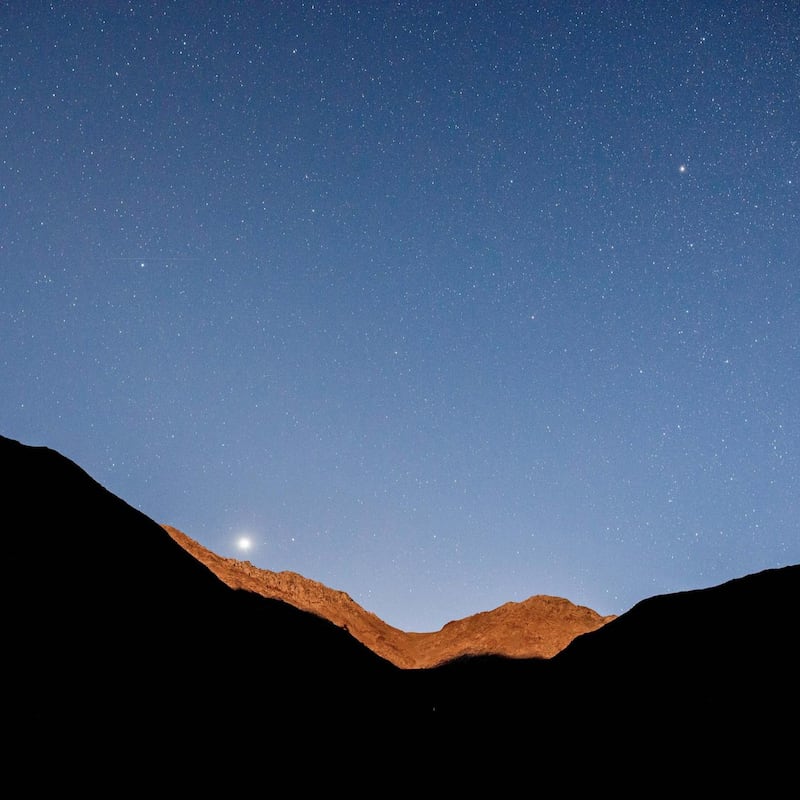
The Elqui Valley in Chile attracts a diverse group of wine and pisco aficionados, stargazers and nature lovers. In 2019, this tranquil agricultural region takes centre stage in the path of totality of a full solar eclipse July 2. Demand for lodging around this time has far outstripped supply, with an estimated 300,000 people expected in the area, and even hotels at the nearby coastal town of La Serena are booked solid. In the Atacama Desert north of the valley, La Silla Observatory is hosting an eclipse-watching event that sold out in 3 1/2 minutes (or about a minute longer than totality itself will last). But those travelling outside eclipse mania still have many reasons to stare at the exceptionally clear sky; the Elqui Valley was named the world's first International Dark Sky Sanctuary as well as a centre of international global astronomy. When the sun is up, travellers can hike through vineyards or stroll through the streets of Vicuña, the largest city. It is a centre of pisco (brandy made in Chile and Peru) production and also the birthplace of poet Gabriela Mistral, winner of the 1945 Nobel Prize for Literature. – Peter Kujawinski
52. The Islands of Tahiti
The birthplace of the overwater bungalow ups its ecotourism
Those looking to escape the roller-coaster news cycle can't get much farther away than this South Pacific archipelago, also known as French Polynesia, which in 2019 celebrates the 250th anniversary of Captain James Cook's arrival and subsequent trumpeting of its riches. Overwater bungalows were invented here: Tahiti's clear, warm waters offer views of more than 1,000 species of marine life. To guard against the climate change threatening parts of the region, the 118 islands and atolls have bolstered their conservation and ecotourism options. Paul Gauguin Cruises offers wildlife discovery immersions. Hotels are trying to decrease their carbon footprints: The Brando resort's eco-friendly facilities include a coconut-oil-powered electric plant, an organic garden and solar panels. Resorts aren't the only lodging option. The Tahitian Guesthouse experience – like Airbnb, but with hosts who cook – unchains visitors from hotels and offers a more authentic Polynesian experience. – Sheila Marikar – New York Times
















